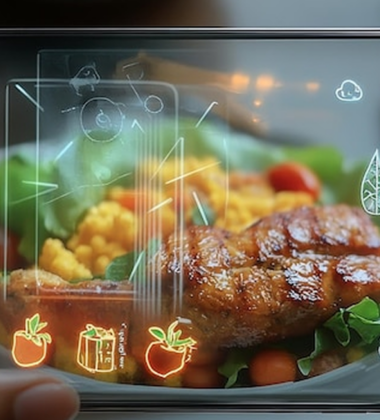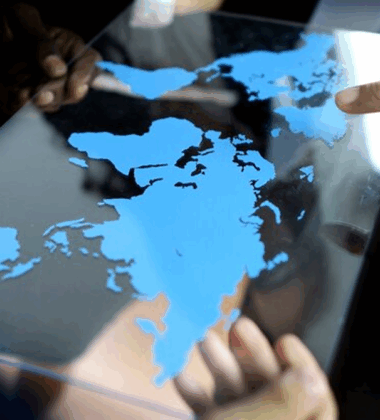Walk through the aisles of any supermarket or scan the snack booths at a major food expo, and you’ll notice one common trait among the best-selling products: they’re designed to be craved. Not just liked. Not simply tasted. But desired—repeatedly, instinctively, and emotionally.
In today’s saturated market, flavor alone is not enough. To drive product velocity and repeat purchase, F&B brands are investing in a new frontier: craveability engineering—a deliberate blend of food science, sensory branding, and psychological strategy.
At the Global Products Expo USA (June 26–28, 2025), craveable food is more than a trend—it’s a competitive advantage. This guide breaks down how top food innovators reverse-engineer addiction, trigger desire, and build flavor-driven brand loyalty from the first bite.
What Makes Food Craveable?
Craveable food doesn’t happen by accident. It’s the result of strategic formulation choices, cross-functional design thinking, and a deep understanding of human behavior. The most successful products do three things at once:
- Satisfy multiple senses at once
- Create a desire loop (want more)
- Anchor emotional memory
These aren’t just culinary achievements—they’re psychological triggers. Craveability is about how food makes people feel, how it fits into their identity, and whether it becomes a product they seek out again and again.
The Science of Desire: How Cravings Are Formed
Cravings are rooted in the brain’s reward circuitry, specifically in the dopamine pathways. But contrary to popular belief, dopamine doesn’t respond to pleasure—it responds to anticipation.
That’s why marketing, design, and naming matter just as much as flavor. They prime the brain to expect satisfaction.
Craveable foods often hit the bliss point—a carefully calibrated balance of fat, sugar, and salt that delivers maximum pleasure without overwhelming the palate.
But craveability can also be engineered beyond just ingredients:
- Texture contrast: Crunch + creaminess
- Temperature play: Warm center in a cold shell
- Sound cues: The audible snap or fizz
- Visual appeal: Glossy, layered, or vibrant color
Neurosensory integration means the more senses you stimulate, the more memorable and desirable the product becomes.
The Craveability Checklist
To design a craveable product, brands must evaluate across five dimensions:
1. Sensory Intrigue
Does the product surprise the senses? Unexpected pairings (e.g., spicy chocolate, salty watermelon) drive curiosity—and repeat experimentation.
2. Immediate Gratification
Craveable food satisfies instantly. No waiting. No subtlety. The flavor should bloom within the first few seconds of tasting.
3. Finish & Afterglow
The best craveable products have a lingering note—something that stays on the tongue or mind, creating a delayed trigger to want more.
4. Emotional Attachment
Does the product remind consumers of something they love? Nostalgia, indulgence, rebellion, or comfort can anchor flavor to identity.
5. Ease of Access
The more frictionless the consumption (single-serve, resealable, grab-and-go), the more frequent the behavior loop.
Examples of Craveability in Action
Let’s look at how real brands are mastering craveability across different food categories.
1. Doritos
- Sensory Power: Loud crunch, neon colors, intense coating.
- Psych Trick: Flavor layering—cheesy, spicy, umami all in one chip.
- Memory Hook: “Once you pop, you can’t stop” becomes lived truth.
2. Jeni’s Ice Cream
- Emotion Link: Flavors like “Salted Peanut Butter with Chocolate Flecks” evoke indulgence with a crafted twist.
- Texture Balance: Smooth base + toothy chunks = multisensory ride.
3. Trader Joe’s Everything But the Bagel Seasoning
- Unexpected Format: A flavor blend made craveable not through form, but function.
- Desire Loop: Easy to sprinkle on anything = infinite craving moments.
Craveability at the Global Products Expo
Expect to see dozens of craveability tactics on display at the upcoming Global Products Expo USA. Some trends to look for include:
- Cross-cultural mashups (e.g., matcha-dusted churros, tandoori BBQ chips)
- Hyper-textured snacks (e.g., layered crunch, popping crystals)
- Nostalgic remixes (e.g., cereal milk lattes, birthday cake hummus)
- Retro packaging with sensory callouts (“Feel the crunch. Taste the throwback.”)
Smart brands will not just offer samples—they’ll engineer the experience with guided tastings, emotional storytelling, and sensory pairings (lighting, music, aroma).
Turning Craveability into Brand Strategy
Creating a craveable product is just the beginning. The next step is embedding it into your marketing, positioning, and customer experience.
1. Own the Language of Desire
Use product copy that emphasizes sensory experiences:
- “Drizzle-worthy”
- “Crackly-crunch meets molten center”
- “Impossible to stop snacking”
This primes the brain for pleasure before tasting begins.
2. Feature Craveability as a Benefit
Instead of talking about macros or ingredients alone, highlight the feeling:
- “Designed to satisfy your 3 PM cravings—without the crash.”
- “Snacking that hits the sweet spot between indulgence and energy.”
3. Build Flavor Rituals
Encourage habitual consumption through:
- Time cues (“Perfect for your morning commute”)
- Social rituals (“Made for movie night or group snacking”)
- Seasonal drops (“Fall cravings, bottled.”)
4. Make Sampling Unforgettable
At expos or in retail, use craveability moments to drive trial and shareability:
- Warm bites served fresh
- QR codes linked to crave stories
- Limited-time craveable variants (spicy, sweet, rare)
Measuring Craveability
You can’t track desire directly, but you can measure its effects.
Key KPIs:
- Repeat purchase rates (are people coming back because they need it?)
- Time to repurchase (how quickly after consumption?)
- Sampling conversion (did tasting lead to buying?)
- Review language mining (look for words like “addicted,” “obsessed,” “my favorite snack”)
Use social listening tools and POS data to understand which products are building emotional hooks—and which need optimization.
Craveability Beyond Junk Food
A common misconception: craveable = unhealthy. Not true.
Modern craveable foods can be:
- Low-sugar (think: fruit-leather with tangy dusting)
- High-protein (smoky, salty, roasted chickpea crunch)
- Functional (caffeinated chocolate, mushroom jerky)
The key is not what the product contains—but how it’s perceived and experienced. Clean-label brands that master craveability win both the health-conscious and the hedonist.
Future of Craveable Food: What’s Next?
The craveability landscape is evolving fast. Here are some forward-looking trends to watch:
- Neuro-tested formulations: Brands will use EEG and biometric feedback to refine flavor stimulation.
- AI flavor prediction tools: Machine learning will help brands forecast craveable profiles before product launch.
- Craveable health: Expect more products that deliver pleasure and wellness through adaptogens, smart sugars, and texture innovation.
At the intersection of tech, sensory branding, and consumer psychology, craveability will become a product category of its own.
Final Bite
In the age of short attention spans and infinite options, craveability is the ultimate retention strategy. It’s not a flavor. It’s not a feature. It’s a feeling—and one that consumers will chase, talk about, and share.
If you’re a food marketer or product developer heading to the Global Products Expo, ask yourself:
- How does your product trigger desire?
- What emotions does it feed?
- What sensory hooks make it irresistible?
Because the most craveable brands aren’t just feeding people. They’re becoming habits.





